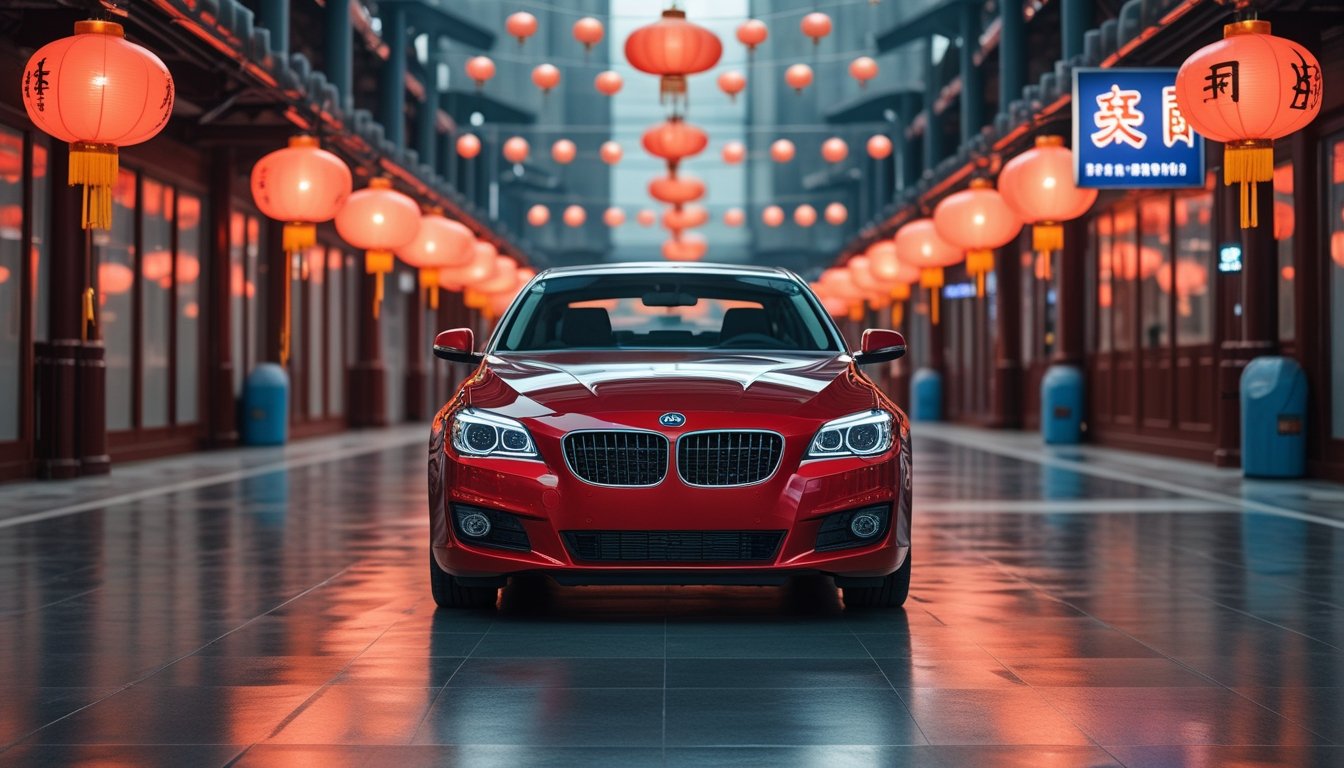Can I import a car from China? The answer is yes, but the process involves complex legal requirements, safety standards, and significant costs that many buyers don't expect. From EPA emissions compliance to DOT safety certifications, importing a vehicle requires navigating multiple federal agencies and regulations.
The import process includes substantial paperwork, mandatory inspections, and various fees beyond the car's purchase price. Many imported vehicles also need costly modifications to meet U.S. standards before they can be legally driven.
This guide explains everything you need to know about importing cars from China, including required documents, compliance steps, and total costs involved.
Discover how legal disputes are handled in China in our guide to Real Estate Disputes in China.
Basic Requirements For Importing Cars From China

If you want to import a car from China, you’ll need the right legal documents, proof of compliance with federal safety and emissions standards, and you’ll have to pay all necessary import duties and taxes. The Environmental Protection Agency and Department of Transportation have their own requirements, and customs paperwork is a must.
Legal Documentation You Must Have
You’ll need some federal forms to legally import your Chinese car. The two big ones are DOT Form HS-7 and EPA Form 3520-1.
DOT Form HS-7 says whether your car meets Federal Motor Vehicle Safety Standards. You’ll submit this to the Department of Transportation before your vehicle can enter the country.
EPA Form 3520-1 covers emissions compliance under the Clean Air Act. This tells the EPA if your car meets federal emission standards.
If you’re importing a nonconforming vehicle, you’ll also need a DOT bond. This bond guarantees you’ll make the required modifications within 120 days after import.
Required documents include:
- Original bill of sale or invoice
- Certificate of origin from manufacturer
- Shipping documents and bill of lading
- Insurance policy covering the vehicle
- Power of attorney (if using a customs broker)
Keep all your paperwork together—customs will want to see everything during inspection.
Safety And Emissions Standards To Meet
Your Chinese car has to meet safety standards from the National Highway Traffic Safety Administration and emissions rules from the EPA. These rules come from the Motor Vehicle Safety Act of 1966 and the Clean Air Act.
Federal Motor Vehicle Safety Standards cover bumpers, crash protection, and other safety features. If your car doesn’t meet these, it’s considered nonconforming and you’ll need a Registered Importer to handle modifications.
The Imported Vehicle Safety Compliance Act of 1988 requires all imports to meet the same standards as US-made cars. You’ll need certification before you can register your car.
EPA standards control emissions and fuel economy. If your car isn’t fuel efficient, you might get hit with a gas-guzzler tax under the Motor Vehicle Information and Cost Savings Act of 1972.
Cars over 25 years old are exempt from most current standards, which makes bringing in classic vehicles a lot simpler.
Import Duties And Tax Obligations
Import duties depend on your vehicle’s type and value. Most passenger cars from China get a 2.5% import duty on the declared value.
Trucks face a much steeper 25% customs duty. For electric vehicles, tariffs can run anywhere from 100% to 247% of the car’s value. Ouch.
Other costs include:
- Harbor maintenance fee (0.125% of value)
- Customs processing fee ($25 for informal entries)
- Gas-guzzler tax (up to $7,700 for inefficient cars)
- State sales tax (varies by state)
You’ll need to pay all duties and taxes before you can take your car. Many folks use customs brokers to handle payments and the mountain of paperwork.
When you add up shipping, duties, modifications, and compliance, the final bill usually ends up well over the car’s original price.
Step-By-Step Import Process And Costs

Importing a car from China generally breaks down into three phases: finding a reliable vehicle and exporter, managing shipping and customs, and budgeting for all the obvious—and not-so-obvious—costs. Each step takes some planning and paperwork if you want to avoid headaches and extra fees.
Finding And Buying Your Car In China
Start by researching exporters who have the right licenses and a solid reputation. Look for companies that focus on vehicle exports and know your country’s rules.
Always verify the exporter’s credentials before you send any money. Ask for their business license and check references from past customers. Some importers even travel to China to see cars in person and get to know their suppliers.
Stick with car models that already meet your country’s safety and emissions standards. Most popular models for import run between $15,000 and $25,000, depending on features.
You’ll need these documents:
- Commercial invoice
- Certificate of origin
- Vehicle title and registration
- Export permit from China
Contact several exporters to compare prices and services. Be clear about costs, delivery times, and any compliance modifications you’ll need.
Shipping And Customs Clearance Steps
Container shipping gives your vehicle better protection but costs more than roll-on/roll-off (RoRo) shipping. Ocean freight usually takes 2-4 weeks, depending on your port.
The shipping company will send you a bill of lading as proof your vehicle’s on its way. You’ll need this for customs and to pick up your car at the port.
Consider hiring a customs broker—they’ll handle the complicated customs clearance process, prep the paperwork, and talk to customs for you.
Key customs documents:
- Bill of lading
- Commercial invoice
- Certificate of conformity
- Import permit (if required)
Your car has to pass safety and emissions inspections before you can take it home. If it doesn’t, an Independent Commercial Importer (ICI) will need to make it compliant first.
Total Costs And Hidden Expenses
Customs duties depend on your vehicle’s value and type, but typically run from 2.5% to 25%. Luxury cars get hit with higher rates.
Ocean freight usually falls between $1,500 and $4,000 per vehicle, depending on the shipping method and destination. Container shipping is pricier, but it’s more secure.
Hidden expenses sneak up in the form of port handling, storage, and inspection fees—these can tack on another $1,000 to $3,000.
Set aside extra for modifications if your car doesn’t meet local standards. ICI compliance work can cost anywhere from $2,000 to $8,000, depending on what needs fixing.
Learn about protecting your investments with our analysis of Property Disputes in China.
Getting Professional Help With Car Imports

Import regulations pull in multiple federal agencies, each with their own rules. Even small mistakes can mean big delays or costs. That’s why a lot of people turn to professional importers and legal experts—they handle the tough paperwork and help keep things on track.
Why Import Regulations Are So Complex
Car imports get tangled between three main federal agencies that don’t always communicate well. The Department of Transportation (DOT) handles safety standards via FMVSS. The Environmental Protection Agency (EPA) watches emissions. Customs and Border Protection keeps an eye on duties and paperwork.
Each agency has its own forms, deadlines, and inspections. You’ll need DOT Form HS-7 for safety and EPA Form 3520-1 for emissions. Miss one, and your import stops cold.
Most Chinese cars need modifications for US standards—airbags, lighting, crash protection, and emissions systems often don’t match up out of the box.
State rules make things even trickier. California, for example, has stricter emissions standards than the feds. Some states won’t register your car unless you have specific documents—and those requirements can change depending on where you live.
Only a DOT-registered importer can legally update non-compliant vehicles. They’re the ones who know how to get your car up to code.
Common Mistakes That Cost Money
One of the worst mistakes? Not checking compliance before you buy. Some folks end up with cars they can’t legally import or register, wasting money on shipping and fees for a car they can’t drive.
Bad paperwork causes expensive delays. Customs will hold your car if forms are wrong or missing, and storage fees at the port can run $50-100 a day while you sort it out.
Customs brokers will charge extra to fix errors after you’ve submitted paperwork. Getting it right the first time saves a lot of money and hassle.
Skipping inspections before shipping is risky. Cars might show up with hidden damage or missing parts needed for US compliance. Fixing these problems here usually costs more than handling them in China.
Plenty of importers underestimate the total bill. They plan for the car and shipping, but forget about duties, modifications, and registration. Independent commercial importers can help you figure out the real cost up front.
How Legal Experts Save Time And Hassle
Legal experts know which Chinese cars are actually practical to import. They’ll review the specs before you buy and flag any compliance issues early, which helps you avoid expensive mistakes.
Registered importers take care of all the modification work. They know the testing facilities and exactly what each vehicle needs, so your compliance process moves along much faster.
Professional importers work with customs brokers who understand vehicle imports. These brokers prep the right paperwork and clear customs efficiently. They even know which ports are best for car imports.
Legal pros also keep up with changing regulations. Tariffs and compliance rules change all the time, so they can help you time your purchase to avoid sudden fee hikes.
After federal clearance, they’ll handle state registration too. Each state has its own documentation and inspection quirks. With help, you’re much more likely to get your imported car on the road legally.
Understand financial legal issues in our breakdown of Loan Disputes in China.
Conclusion: Can I Import a Car from China
Importing a car from China is possible but involves complex regulations, substantial costs, and strict compliance requirements. From safety certifications to customs duties, the process requires careful planning and thorough documentation to avoid costly mistakes.
The legal requirements and potential modifications needed make professional guidance essential for successful vehicle imports. Working with experts who understand both Chinese export laws and US import regulations can save you time, money, and compliance headaches.
Learn more about navigating China's complex regulatory environment in our comprehensive guide to China's Social Credit Score system.
Frequently Asked Questions: Can I Import a Car from China
A lot of people wonder about the rules for buying Chinese cars and bringing them to the US. Taxes and age restrictions are big factors to consider.
Can I buy a car in China and bring it to the USA?
Yes, you can buy a car in China and bring it to the USA, but strict federal regulations and safety standards apply. Your vehicle must meet EPA emissions requirements and pass DOT safety standards before legal use. The process requires customs clearance, vehicle inspection, proper documentation, and often costly modifications to meet US standards.
Are Chinese made cars allowed in the US?
Chinese-made cars are allowed if they meet federal safety and emissions standards through required inspections and modifications. Most Chinese cars need changes for US compliance including lighting, safety features, and emissions controls. Electric vehicles from China face the same standards as gas cars, including safety certifications and charging compatibility requirements.
Do I have to pay tax if I import from China?
Yes, you'll pay import duties ranging from 2.5% to 25% of the vehicle's value when importing from China. You'll pay customs duties at the port, plus your state may charge additional sales or use tax. These taxes are mandatory and must be paid before you can register your imported car in any state.
What is the 25 year rule for importing cars?
The 25 year rule allows importing cars at least 25 years old without meeting current safety standards. Cars under 25 years old must meet all current DOT safety and EPA emissions requirements. The rule applies to the actual manufacture date, and classic Chinese vehicles over 25 years still require customs paperwork and tax payments.
Subscribe to receive updates
Subscribe to receive the latest blog posts to your inbox every week.



